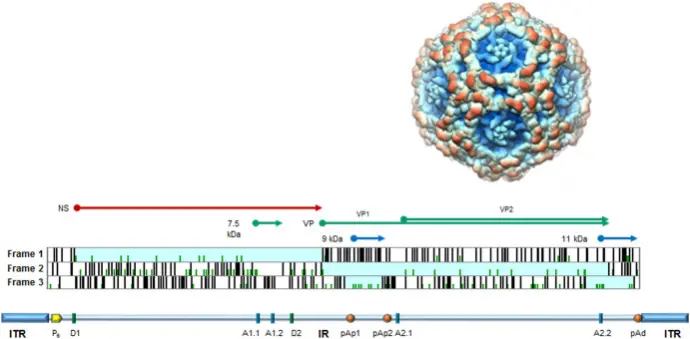HUMAN PARVOVIRUS INFECTIONS
Parvovirus B19 is a small, non-enveloped DNA virus belonging to the Parvoviridae family. It primarily infects human erythroid progenitor cells and is responsible for various hematological and immunological effects.
Genomic Structure and Replication
Parvovirus B19 has a single-stranded DNA genome of approximately 5.6 kb. It contains two main coding regions:
- NS1 gene: Encodes a multifunctional protein essential for viral replication and cell cycle modulation.
- VP1 and VP2 genes: Encode structural proteins forming the viral capsid.
Replication occurs in the nucleus of dividing cells, following the rolling-hairpin replication mechanism.
Transmission and Pathogenesis
The virus is transmitted through respiratory droplets, blood transfusions, and vertically from mother to fetus. It targets erythroid precursor cells in the bone marrow, leading to temporary inhibition of erythropoiesis. This can result in conditions such as transient aplastic crisis in individuals with underlying hemolytic disorders.
Laboratory Diagnosis
- PCR (Polymerase Chain Reaction): Detects viral DNA in blood and tissue samples.
- Serology (ELISA): Identifies IgM and IgG antibodies to determine recent or past exposure.
Biotechnological Applications in Research
- Recombinant Protein Expression: Used in structural studies of viral proteins.
- Gene Therapy Vectors: Engineered parvoviruses are investigated as potential gene delivery tools.
- Cell Culture Models: Provide insight into viral replication and host interactions.
Parvovirus B19 research continues to advance, particularly in molecular virology and biotechnology applications. Understanding its genomic properties and replication mechanisms aids in developing novel diagnostic tools and biotechnological applications.
Download the full PDF for detailed insights and technical data on Parvovirus B19.
